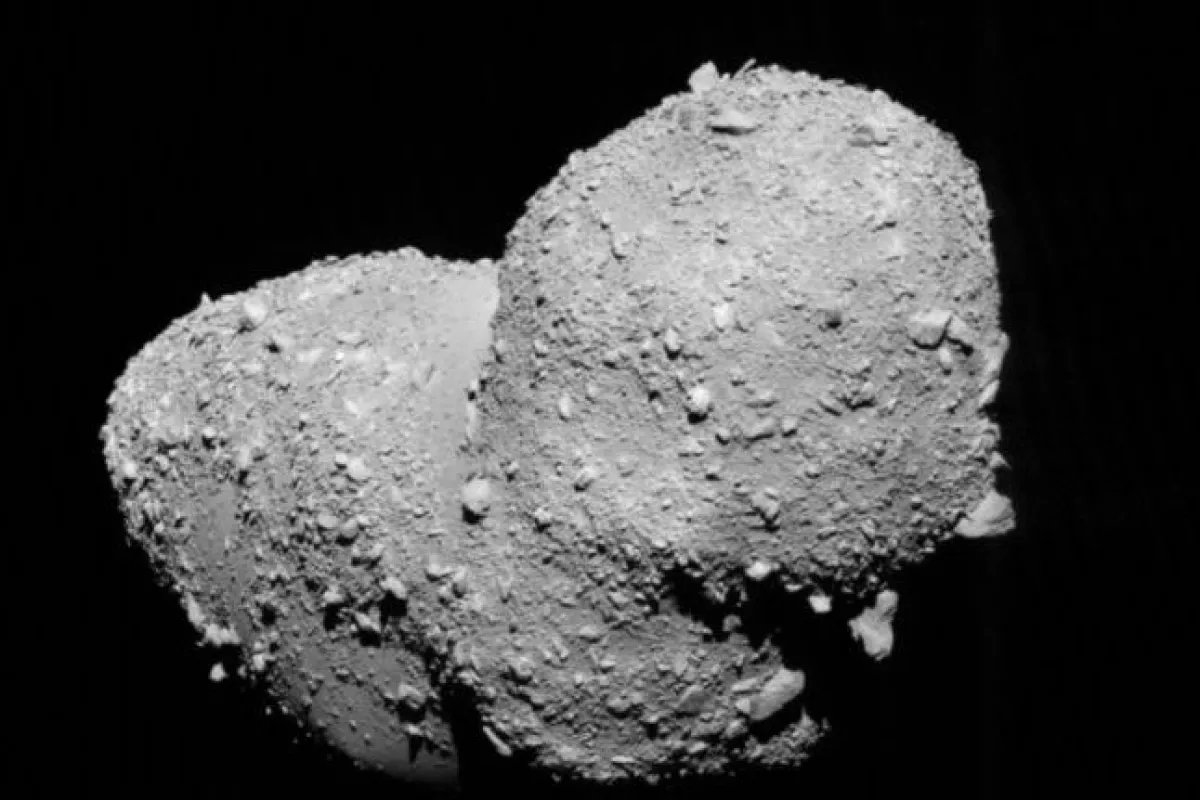Researchers just can’t seem to keep their hands off asteroid Itokawa, and with good reason. Following on from the discovery of pyroxene, which contains water in its crystal structure, in a sample taken from the stony space mass, another team at the University of Arizona has upped the game and found common old salt crystals. These could not be formed without the presence of water.
"The grains look exactly like what you would see if you took table salt at home and placed it under an electron microscope," said Tom Zega, the study's senior author and a professor of planetary sciences at the UArizona Lunar and Planetary Laboratory. "They're these nice, square crystals. It was funny, too, because we had many spirited group meeting conversations about them, because it was just so unreal."
While you’d usually be hard pressed to find a group of scientists excited to be looking at sodium chloride – salt – there’s a good reason for it here.
As scientists continue to search for answers as to exactly how complex life on Earth began, finding these crystals – which can only form in the presence of liquid water – adds more weight to the theory that these humble space rocks played a role in the process.
What’s more, this sample is of an ordinary chondrite, a stony meteorite in this case derived from the endearingly peanut-shaped, near-Earth asteroid Itokawa, which itself is thought to have split from a much larger parent body at some point. Stretching around 2,000 feet (610 m) in length, Itokawa is an S-type asteroid, which simply means it’s stony, and neither this type of asteroid nor these chondrites usually have water-bearing minerals.
"It has long been thought that ordinary chondrites are an unlikely source of water on Earth," said Zega. "Our discovery of sodium chloride tells us this asteroid population could harbor much more water than we thought."

While sodium chloride has been found in samples sourced from this asteroid before, scientists couldn’t rule out contamination from contact with Earth. This sample, however, captured by the Japanese Hayabusa spacecraft and kept free of contaminants, confirmed the crystals came from an ancient stone belonging to the asteroid.
Rigorous testing of its structure ruled out contamination (storage, human sweat, for example), and a control testing terrestrial rocks showed no traces of what this 150-micrometer sample particle had to offer.
"The terrestrial samples did not contain any sodium chloride, so that convinced us the salt in our sample is native to the asteroid Itokawa," he said. "We ruled out every possible source of contamination."

The researchers also found a vein of plagioclase, a sodium-rich silicate mineral, running through their sample.
"When we see such alteration veins in terrestrial samples, we know they formed by aqueous alteration, which means it must involve water," said Shaofan Che, the study’s lead author. "The fact that we see that texture associated with sodium and chlorine is another strong piece of evidence that this happened on the asteroid as water was coursing through this sodium-bearing silicate."
With more clues than answers, this study does, however, raise the question about whether we’ve underestimated S-type asteroids.
"If it now turns out that the most common asteroids may be much 'wetter' than we thought, that will make the water delivery hypothesis by asteroids even more plausible,” added Zega.
The study was published in the journal Nature Astronomy.
Source: University of Arizona






